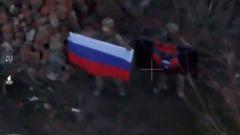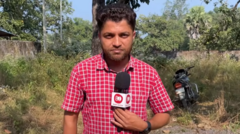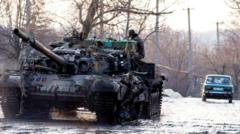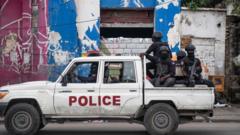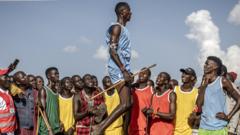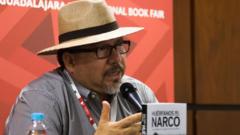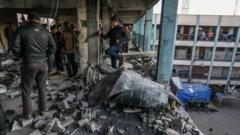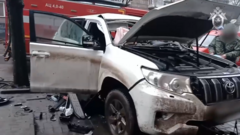The death of journalist Alexander Martemyanov in a drone strike near Donetsk, reportedly by Ukrainian forces, has prompted strong accusations from Russia, while Ukraine remains silent. This incident raises critical discussions about the risks journalists face in war zones and the implications for media freedom.
Journalist Killed in Alleged Ukrainian Drone Strike: Perspectives on Press Safety in Conflict Zones
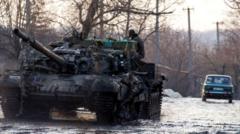
Journalist Killed in Alleged Ukrainian Drone Strike: Perspectives on Press Safety in Conflict Zones
A freelance journalist's death in eastern Ukraine raises questions about the safety of media personnel amidst the ongoing war, highlighting contrasting narratives from Russia and Ukraine.
In the war-torn region of eastern Ukraine, the Russian state newspaper Izvestia reported the death of one of its freelance reporters, Alexander Martemyanov, who was reportedly killed by a Ukrainian drone strike near Donetsk. According to the report, the vehicle carrying Martemyanov was targeted while traveling on a highway in an area under Russian control, returning from coverage of shelling in the Russian-held city of Gorlivka. Five other media workers were also reported injured in the same incident.
Izvestia conveyed that the drone strike by the Ukrainian military appeared to be a deliberate act, as stated on their Telegram channel. They emphasized that the vehicle was positioned away from the front lines, indicating it was a civilian vehicle rather than a military target. Russia's state RIA news agency corroborated the report, also mentioning that two journalists from their agency suffered injuries in the attack.
Russian Foreign Ministry spokeswoman Maria Zakharova characterized the event as "deliberate murder," asserting it as part of a continuous pattern of "bloody atrocities" attributed to the government of Ukrainian President Volodymyr Zelensky. She condemned the act, framing it within the larger context of a conflict that has seen numerous killed or injured journalists since Russia launched its full-scale invasion of Ukraine in February 2022.
In the broader media landscape, the safety of journalists is increasingly precarious in conflict zones. The European Union took measures in May to block Russian media outlets, including Izvestia and RIA, for their alleged roles in promoting propaganda and facilitating Russia's military aggression against Ukraine. According to the Committee to Protect Journalists, the ongoing conflict has claimed the lives of at least 15 journalists.
The narratives surrounding this incident reflect the polarized views on press safety and media freedom in wartime, with both sides contesting the motivations and consequences of journalist-related casualties in the ongoing war in Ukraine.
Izvestia conveyed that the drone strike by the Ukrainian military appeared to be a deliberate act, as stated on their Telegram channel. They emphasized that the vehicle was positioned away from the front lines, indicating it was a civilian vehicle rather than a military target. Russia's state RIA news agency corroborated the report, also mentioning that two journalists from their agency suffered injuries in the attack.
Russian Foreign Ministry spokeswoman Maria Zakharova characterized the event as "deliberate murder," asserting it as part of a continuous pattern of "bloody atrocities" attributed to the government of Ukrainian President Volodymyr Zelensky. She condemned the act, framing it within the larger context of a conflict that has seen numerous killed or injured journalists since Russia launched its full-scale invasion of Ukraine in February 2022.
In the broader media landscape, the safety of journalists is increasingly precarious in conflict zones. The European Union took measures in May to block Russian media outlets, including Izvestia and RIA, for their alleged roles in promoting propaganda and facilitating Russia's military aggression against Ukraine. According to the Committee to Protect Journalists, the ongoing conflict has claimed the lives of at least 15 journalists.
The narratives surrounding this incident reflect the polarized views on press safety and media freedom in wartime, with both sides contesting the motivations and consequences of journalist-related casualties in the ongoing war in Ukraine.

